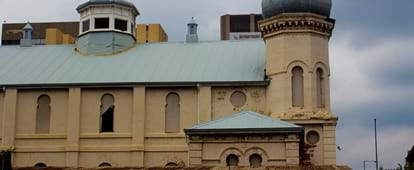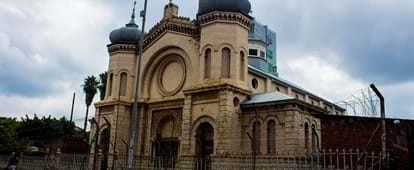By creating an account, I agree to the
Terms of service and Privacy policy
Choose your country and language:
Africa
Americas
Asia Pacific
Europe
HHistory and culture in Pretoria have shaped a lot about the character of this city. Once the capital of the old independent Transvaal Boere Republic, the new democratic Pretoria lies in Gauteng province, as part of the Tshwane municipality, and is the administrative and diplomatic hub of the country.
Given its often turbulent past, it’s no surprise that landmarks of these moments are everywhere. To the south, the Voortrekker monument watches over the diverse population in constant flux, while a leisurely stroll around the city centre takes discerning visitors to a line of grand and historic buildings that will be familiar to a European set of eyes.

YYou can’t help but be absorbed into this history as you peruse Die Raadsaal (the parliament buildings of the former Boer Republic), the Palace of Justice (used as a military hospital until 1902) and Paul Kruger Street Synagogue, commonly known as the Old Synagogue. Designed to resemble the architectural traditions of the Eastern Roman Empire in 1897, the Old Synagogue was the first Jewish house of worship to be consecrated in Pretoria.
For more than 50 years, the ornate synagogue was characterised by its sandstone plinth, coloured brickwork, as well as its stained glass and top, hung windows - until the Department of Public Works (DPW) expropriated the building in 1952. In an effort to address the unwavering resistance against the government, the DPW transformed the synagogue into a Supreme Court complex – which allowed for relatively large numbers and effective crowd dispersal.
Pretoria was a remote city that was inconvenient to Johannesburg, and certainly to the black townships where many of the accused and their supporters lived. However, that did little to deter the deluge of supporters who thronged the streets outside the courtroom and disrupted the legal proceedings with songs of protest.
It was in this remodelled edifice – furnished with a dock, tables, chairs and public pews all bearing a civil service number – where leaders of the African National Congress (ANC) were tried for acts of sabotage designed to overthrow the apartheid government during the Treason Trial.

AAmong them were Nelson Mandela and Walter Sisulu who, in 1958, spent copious amounts of time locked in the newly-added holding cells built outside the main synagogue – which was repainted in a cream colour to add to its political significance. Despite all the changes and additions that were made to the synagogue, it was still ghosted by its former function as a religious space.
Unintended and unanticipated by the state, one of the witnesses in the Treason Trial, M.Mkalipe, brought his Bible into the witness box. To the surprise of the judges, who were seated where the rabbi often stood alone, he read a few verses from the book of Daniel to his assembled ‘congregation’. He did this to deliberately invoke the rich history of the Old Synagogue – once a religious space distinct from the Calvinist Dutch Reformed roots of the National Party apartheid regime.
The Old Synagogue
Related articles

